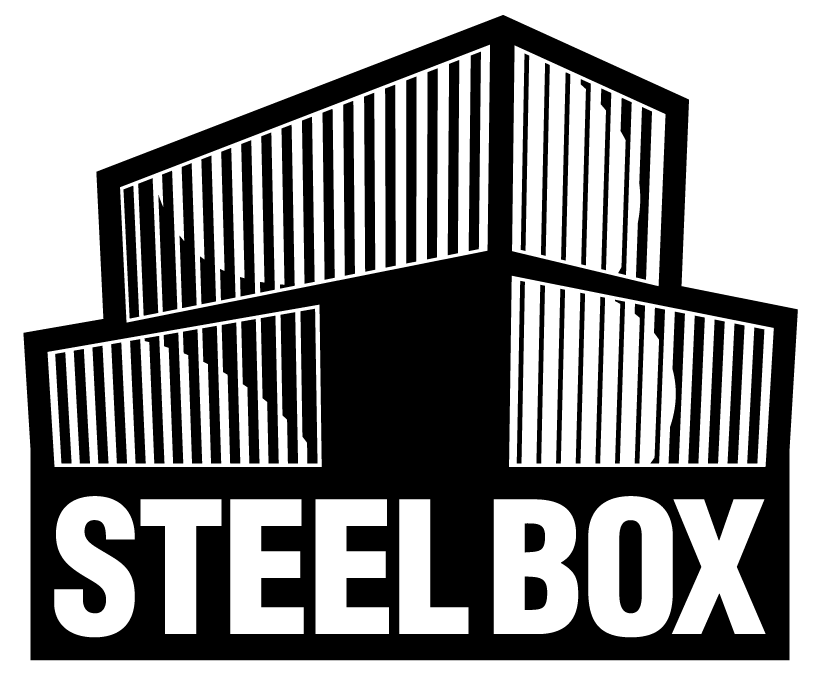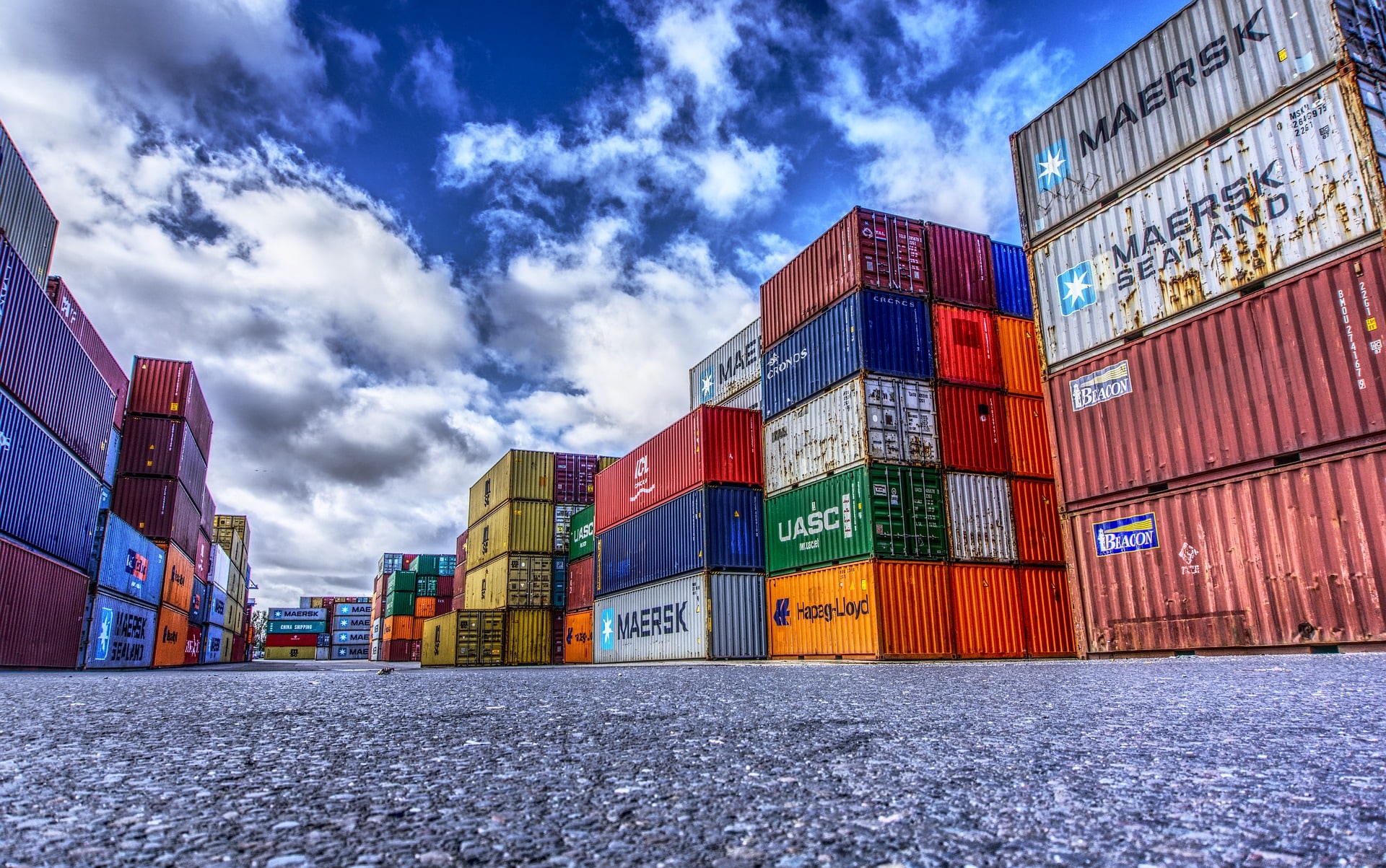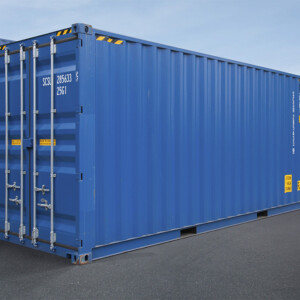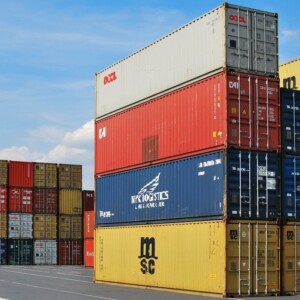Thinking of investing in a shipping container but not sure of the size options or if it’s right for you? With so much information out there, it can be hard to know where to start. Understanding common container specs and capacity will help you choose the right one for you. In this container size guide we will go through standard and specialized options, breaking down the different container types and their measurements.
Shipping Container Dimensions
The International Organization for Standardization (ISO) is an independent body that sets the standards for shipping container’s size, strength and durability requirements. ISO 688 standardizes the dimensions and ratings of shipping containers.
Shipping Container Length
Shipment containers come in three lengths: 10ft, 20ft and 40ft. The most popular size is the 40ft container, which is around 12 meters. These are used for international shipping. 20ft containers are 6 meters long and are used for storage. 10ft containers are 3 meters long and are used for custom needs like on site storage but not for international shipping.
Shipping Container Height
A standard shipping container is 7.84 ft and 8.5 ft (2390 and 2591 mm), which is 8.2 ft or 2500 mm high. If you need more space, go for a high cube container which is 9.50 ft tall or 2896 mm.
Shipping Container Weight
There are three weight factors for shipping containers: cargo weight, maximum weight and tare weight. A 20 ft container weighs 4806.077 lbs (2180 kg), a 40ft container 7980.734 lbs (3620 kg) and a 40ft HC container 8421.658 lbs (3820 kg). For maximum weight, a 20ft shipping container can carry up to 55115.566 lbs (25000 kg) of cargo while a 40ft can carry 67240 lbs (30500 kg).
Shipping Container Capacity
A standard 40ft container has 67.3 m3 capacity while a 20ft container has 33.1 m3. Remember each container’s capacity may vary.
Types of Containers
Discover the world of shipping containers – designed for specific needs and available in various sizes. Shipping containers come in standard sizes to be stacked on top of and below shipping containers. Explore the popular standard containers and specialized options.
Standard Containers
Standard containers are the most commonly used shipping containers and form the backbone of international trade and transportation.Their versatile shipping container dimensions make them ideal for safely storing and transporting a wide variety of goods. Clear container specifications ensure consistent use across global supply chains.
10-foot Shipping Container Dimensions
Compact yet highly practical, 10-foot containers are among the smallest standard shipping container sizes available, perfect for personal use and portable storage solutions. With convenient shipping container measurements, they easily accommodate the contents of a one-bedroom apartment. Knowing precise container specifications helps individuals select the ideal storage or shipping solution.
Exterior Dimensions: 10′ L x 8′ W x 8’6″ H (3048 x 2438 x 2591 mm)
Interior Dimensions: 9’4″ L x 7’8-1/8″ W x 7’9-5/8″ H (2865 x 2333.6 x 2408 mm)
Door Opening Dimensions: 7’8.5″ W x 7’5.75″ H (2393 x 2134 mm)
Steel Thickness: ~14 gauge (walls), ~1.6 mm
Max Gross Weight: ~22,000 lbs (9979 kg)
Tare Weight: ~2,200 lbs (998 kg)
Payload Capacity: ~19,800 lbs (8981 kg)
20-foot Shipping Container Dimensions
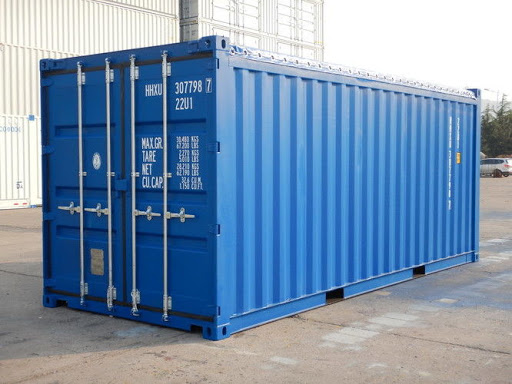
This is the most popular and widely used size shipping container. They’re ideal for storage for businesses or offices for individuals.
Exterior Dimensions: 20′ L x 8′ W x 8’6″ H (6096 x 2438 x 2591 mm)
Interior Dimensions: 19’5″ L x 7’8″ W x 7’9″ H (5944 x 2377 x 2408 mm)
Door Opening Dimensions: 7’8.5″ W x 7’5.75″ H (2393 x 2134 mm)
Steel Thickness: ~14 gauge
Max Gross Weight: 52,910 lbs (24,000 kg)
Tare Weight: ~4,850 lbs (2200 kg)
Payload Capacity: ~48,060 lbs (21,800 kg)
40-foot Shipping Container Dimensions
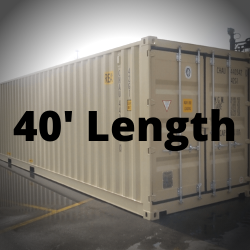
Double the length of a 20ft container, the 40ft container has more shipping container dimensions to offer for large shipments and bulk storage. It’s a favorite container type for businesses with big inventories or big cargo loads, with clear container specifications and plenty of interior space.
Exterior Dimensions: 40′ L x 8′ W x 8’6″ H (12192 x 2438 x 2591 mm)
Interior Dimensions: 39’5″ L x 7’8″ W x 7’9″ H (12032 x 2377 x 2408 mm)
Door Opening Dimensions: 7’8.5″ W x 7’5.75″ H (2393 x 2134 mm)
Steel Thickness: ~14 gauge
Max Gross Weight: 67,200 lbs (30,480 kg)
Tare Weight: ~8,500 lbs (3855 kg)
Payload Capacity: ~58,700 lbs (26,625 kg)
40-foot High Cube Container Dimensions
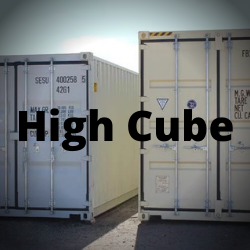
The 40ft High Cube container is a specialized container type with more vertical space than a standard 40ft container. Its extra height gives more interior space for oversized or taller items. Knowing the container specs will help you make the most of these extra shipping container dimensions.
Exterior Dimensions: 40′ L x 8′ W x 9’6″ H (12192 x 2438 x 2896 mm)
Interior Dimensions: 39’5″ L x 7’8″ W x 8’10” H (12032 x 2377 x 2695 mm)
Door Opening Dimensions: 7’8.5″ W x 8’5″ H (2393 x 2565 mm)
Steel Thickness: ~14 gauge
Max Gross Weight: 67,200 lbs (30,480 kg)
Tare Weight: ~8,750 lbs (3969 kg)
Payload Capacity: ~58,450 lbs (26,511 kg)
45-foot Shipping Container Dimensions
The 45-foot container provides extra length, delivering increased storage capacity while maintaining standard width and height guidelines. These units are particularly beneficial when standard container types aren’t sufficient for larger loads. By understanding precise shipping container measurements and related container specifications, businesses can maximize their efficiency in shipping or storing extensive inventories.
Exterior Dimensions: 45′ L x 8′ W x 9’6″ H (13716 x 2438 x 2896 mm)
Interior Dimensions: 44’5” L x 7’8″ W x 8’10” H (13564 x 2377 x 2695 mm)
Door Opening Dimensions: 7’8.5″ W x 8’5″ H (2393 x 2565 mm)
Steel Thickness: ~14 gauge
Max Gross Weight: 74,960 lbs (34,000 kg)
Tare Weight: ~10,200 lbs (4627 kg)
Payload Capacity: ~64,760 lbs (29,373 kg)
Specialized Containers
Beyond standard and high cube containers! Discover the world of unique containers for specific needs. From reefers to flat racks, double doors to open tops each have their own container specs for specific needs. Familiarize yourself with these unique shipping container dimensions and say goodbye to one-size-fits-all and hello to custom-made containers.
Refrigerated Containers (Reefers) Dimensions
These containers have cooling systems to maintain specific temperature and humidity levels. They’re essential for shipping perishable goods like fruits, vegetables and pharmaceuticals. Reefer containers come in 20ft and 40ft containers. Check the dimensions below:
| Size | 20ft | 40ft | 40ft HC |
| Internal Length | 17.9ft | 37.9ft | 38.0 ft |
| Internal Width | 7.5ft | 7.5ft | 7.5 ft |
| Internal Height | 7.4ft | 7.4ft | 7.9 ft |
| Payload | 61,078 lbs | 65,080 lbs | 65,080 lbs |
| Cubic Capacity | 2,093 cu ft | 2,380 cu ft | 2,380 cu ft |
Open-Top Containers Dimensions
As the name suggests, these containers have no roof, perfect for top loading or items that exceed the standard height limit.
| Size | 20ft | 40ft |
| Internal length | 19.4ft | 39.5ft |
| Internal width | 7.8ft | 7.9ft |
| Internal height | 7.8ft | 7.8ft |
| Payload | 62,214 lbs | 58,422 lbs |
| Cubic Capacity | 1,155 cu ft | 2,356 cu ft |
Flat Rack Containers Dimensions
Collapsible sides make these containers ideal for shipping large, irregularly shaped items like machinery or vehicles.
| Size | 20ft | 40ft |
| Internal length | 19ft | 39.8ft |
| Internal width | 7.7ft | 7.9ft |
| Internal height | 7.7ft | 7ft |
| Payload | 66,458 lbs | 88,200 lbs |
| Cubic Capacity | 1,213 cu ft | 2,195 cu ft |
Choosing the Right Container
Choosing between container types isn’t just about capacity—it’s also about understanding precise shipping container measurements and how they’ll affect your project or shipment. Whether you choose a standard size or a specialized option, having clear container specs at your fingertips will help you make informed decisions.
- Volume of Goods: Estimate the volume of your goods to determine the container size. Go for bigger containers if you have more items to ship.
- Nature of Goods: Fragile or sensitive items may require specialized containers with climate control or additional security measures.
- Loading and Unloading: Think about how you’ll load and unload your goods. Some containers have special features like side doors or removable walls for easier access.
- Shipping Route: Different countries and regions have different regulations for container sizes. Check these regulations to avoid any shipping issues.
The Best Container For You
Mastering shipping container sizes is essential for the secure and efficient delivery of your goods. By grasping the intricacies of container types and their uses, you can streamline shipping, cut costs, and optimize logistics. Whether you’re a small business owner entering international trade or an individual moving abroad, choosing the right container size is crucial for a successful shipping experience. Embrace the insights in this guide and confidently embark on your global shipping adventure.

